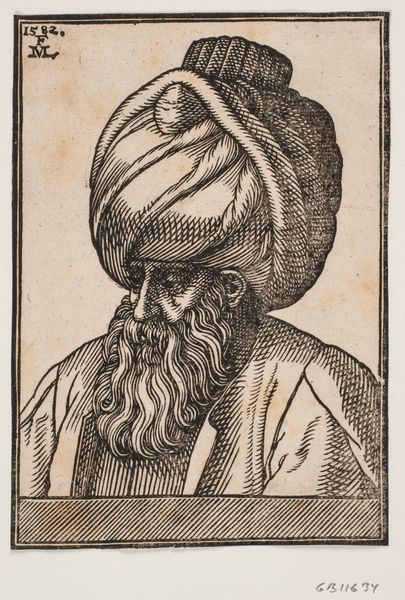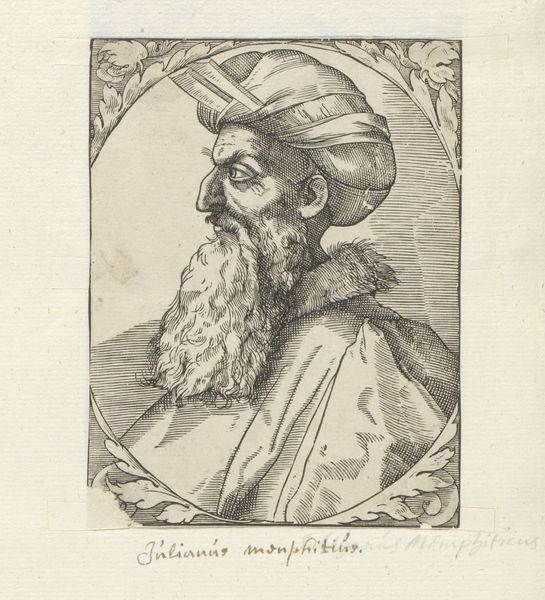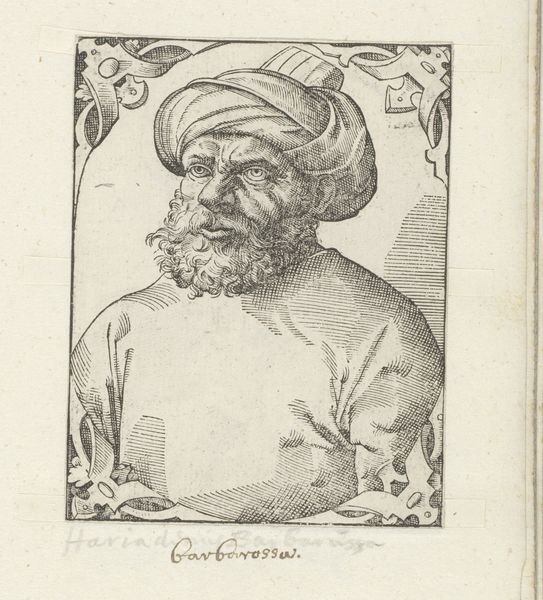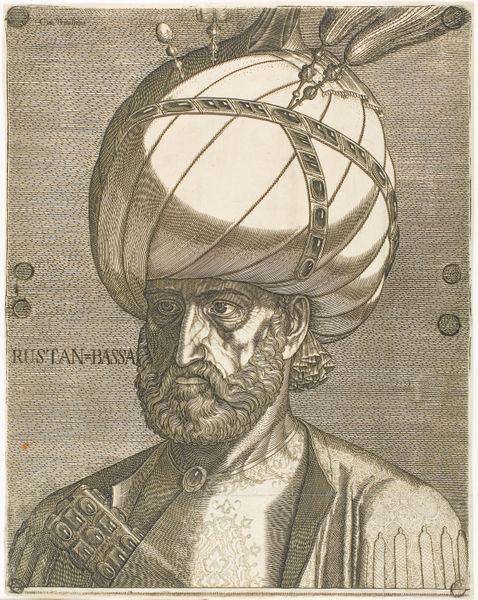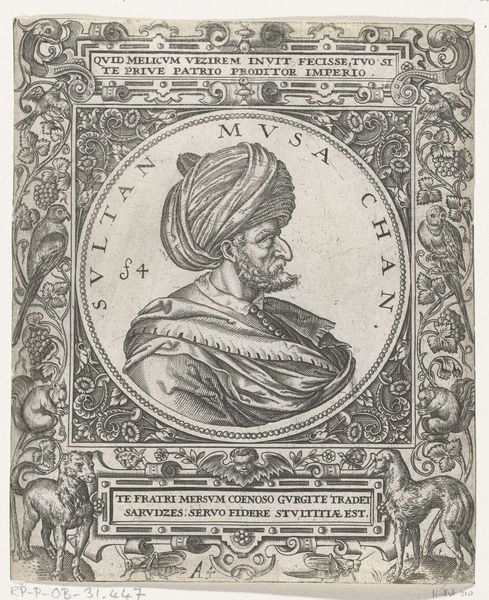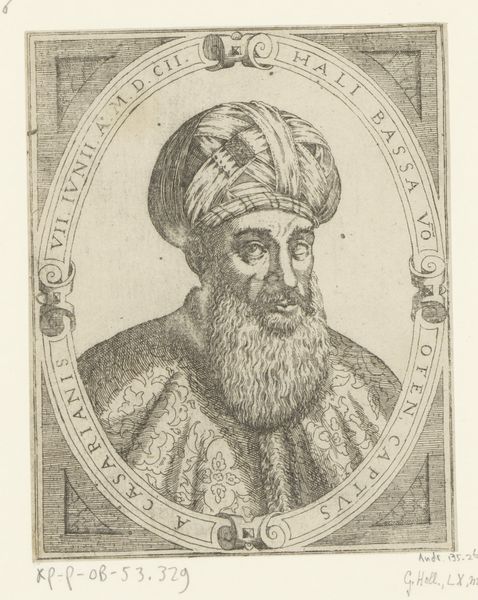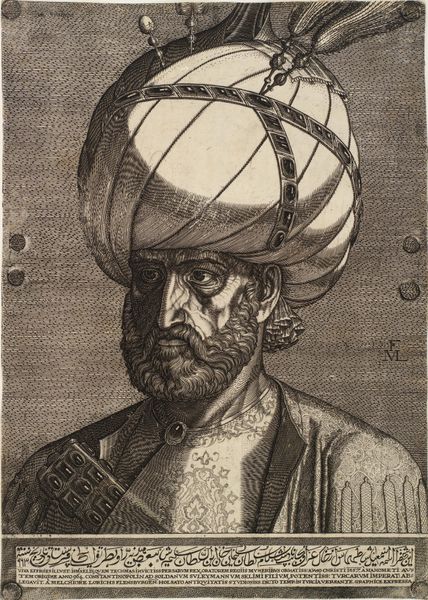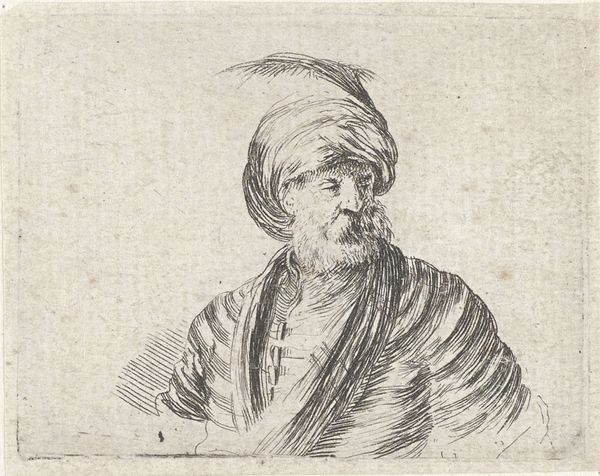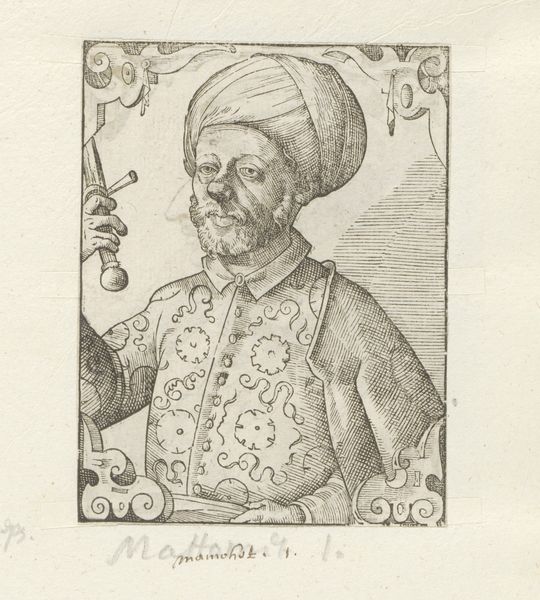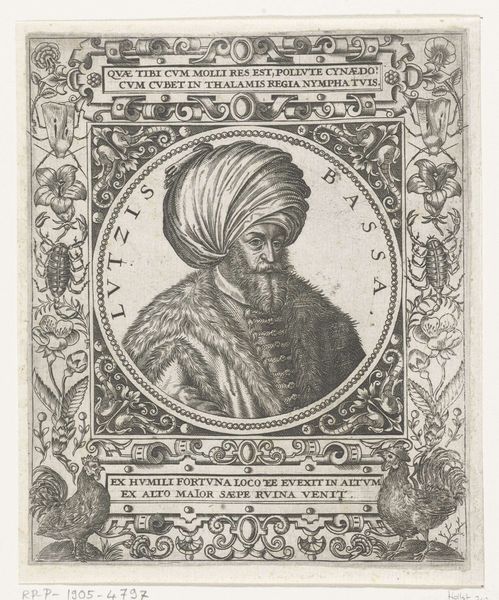
Bust of bearded man wearing a turban, 3/4 profile towards the right 1582
0:00
0:00
print, woodcut
#
portrait
# print
#
11_renaissance
#
woodcut
#
islamic-art
#
history-painting
Dimensions: 110 mm (height) x 72 mm (width) (bladmaal)
Editor: This is Melchior Lorck's "Bust of bearded man wearing a turban, 3/4 profile towards the right," created in 1582. It's a woodcut print, and I'm struck by the detail in the turban and beard, all rendered in these sharp black lines. What can you tell us about this piece? Curator: Well, consider the historical context. Lorck was a Renaissance artist who traveled to Constantinople. This print, therefore, is not just a portrait; it's a representation filtered through a European lens. How do you think his cultural background shaped his depiction of this man? Editor: I suppose he may have exoticized him somewhat, focusing on the "otherness" of his appearance through details like the turban. Curator: Exactly! It reflects a fascination with the Ottoman Empire, but also perhaps a sense of cultural distance. Think about the power dynamics at play: Who is doing the representing, and who is being represented? Is this an attempt at an accurate portrayal, or is it more about constructing a European idea of the "Orient?" Editor: So it's not just about the individual in the portrait, but about the relationship between cultures and how they perceive each other? Curator: Precisely. This print becomes a document of cultural exchange, revealing the biases and assumptions inherent in cross-cultural representation during the Renaissance. Who do you imagine was the audience for prints like these? How might they have interpreted this image? Editor: Probably Europeans who had little direct contact with Ottoman culture. This print likely shaped their understanding, or perhaps misunderstanding, of it. That’s much more than just a portrait! Curator: It highlights the crucial role art plays in shaping and perpetuating cultural narratives. Next time you look at a portrait, consider the socio-political currents rippling beneath the surface.
Comments
No comments
Be the first to comment and join the conversation on the ultimate creative platform.

